Ronda is one of the most visited destinations in Spain. The main characteristic and defining geographic attribute is the El Tajo gorge that separates the new and the old parts of Ronda.
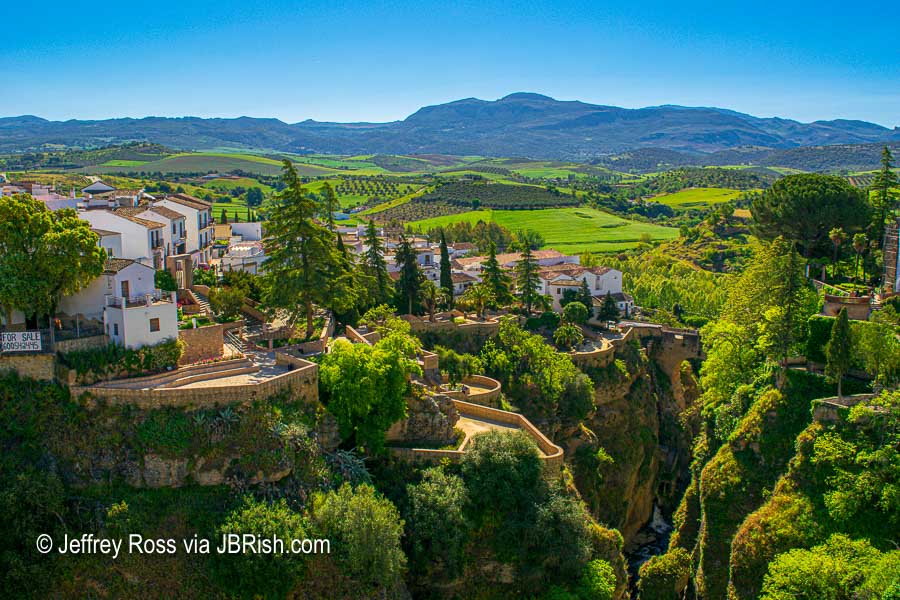
Well, if there is a ravine dividing a city,there is a need to connect them somehow and that is the function of impressive Puente Nuevo (New Bridge).
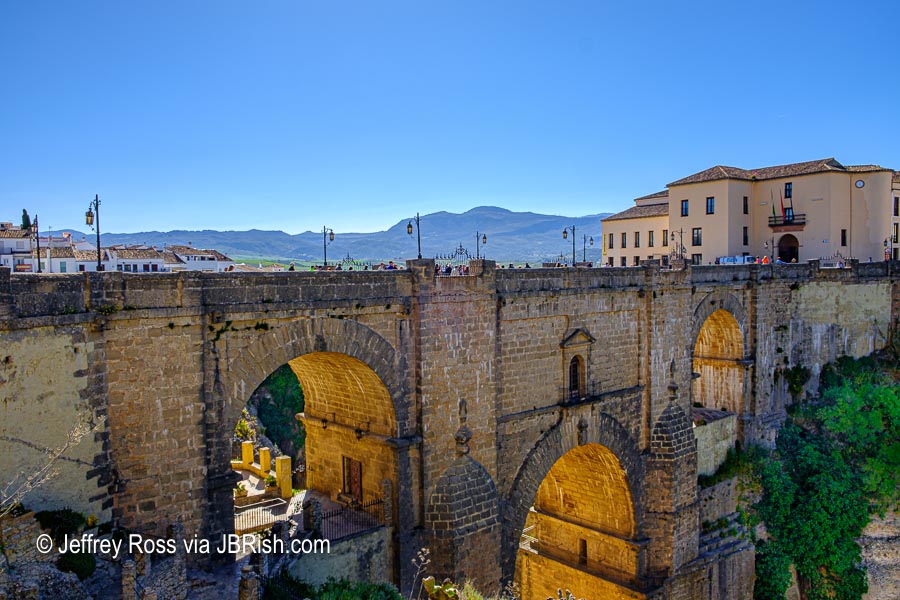
The first time I looked over the top of the bridge and saw this view, I was stunned at how beautiful it was in the the early morning light!
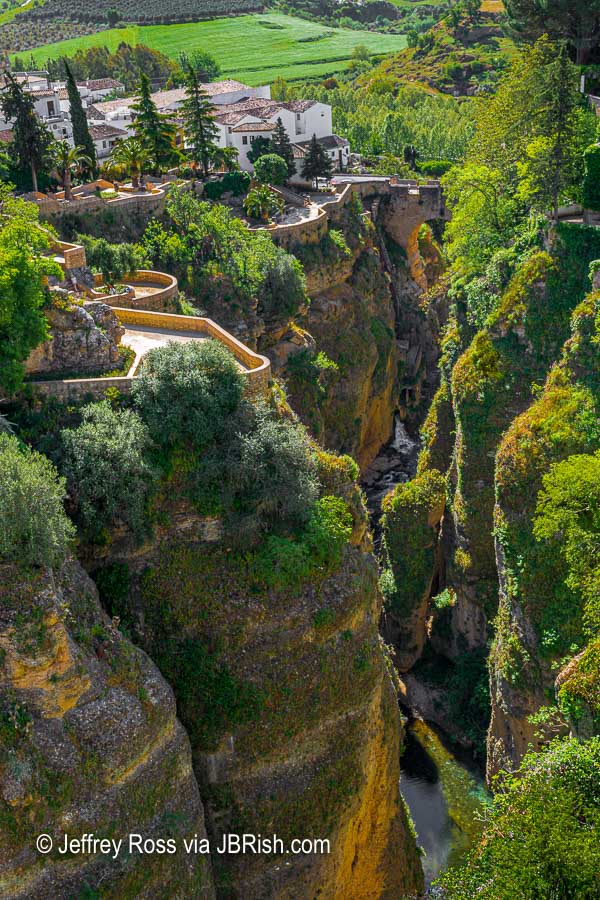
The bridge is an essential part of Ronda’s culture, allowing the newer parts of the city to easily mix with the old. It took more than forty years to build and should be seen as a marvel from many of the nearby vantage points.

We did not have time to walk down to the bottom of the gorge, but that too is another spectacular view of the Puente Nuevo (see the other photographs HERE)
Once across the bridge, we stopped to view an old city map created in the azulejo style of tin-glazed ceramics mounted on a building wall. The title, Viajeros Romanticos translates to Romantic Travelers.
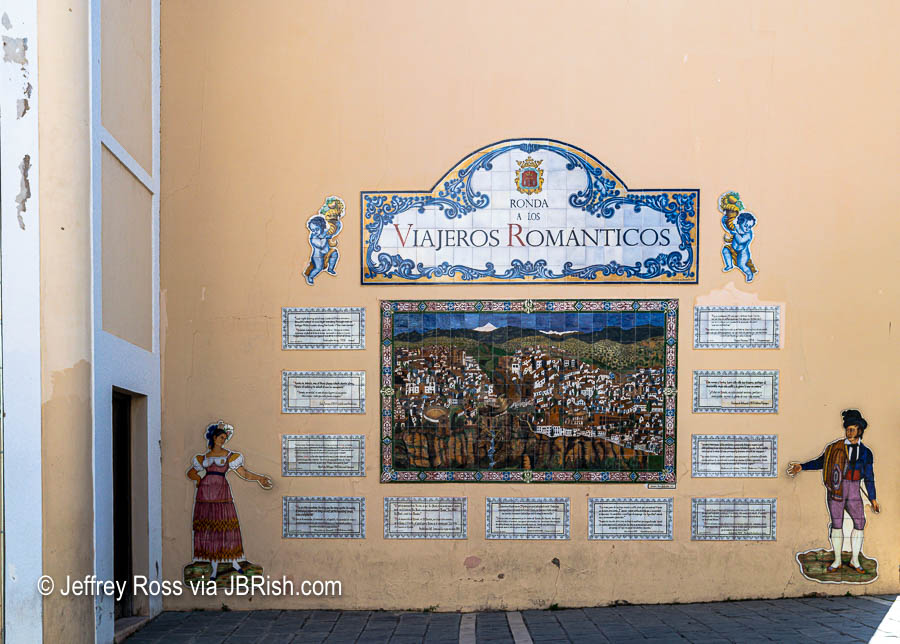
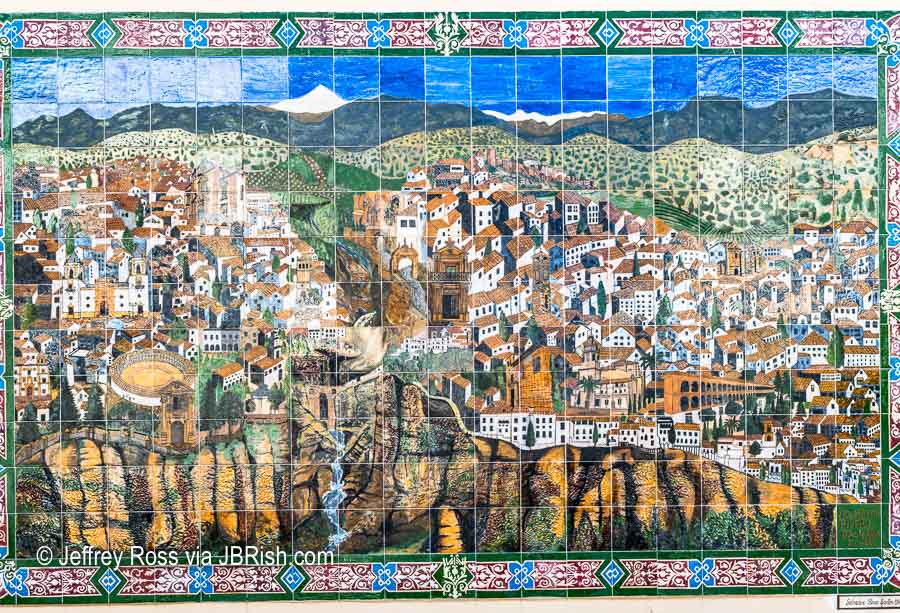
We next visited the John Bosco house which was considered palatial in its day. It was bequeathed to the Order of Salesian Priests founded by Saint John Bosco and served as a retreat for that religious order. The picture below is of an interior courtyard.

What adds to the allure of this estate are the beautiful gardens…
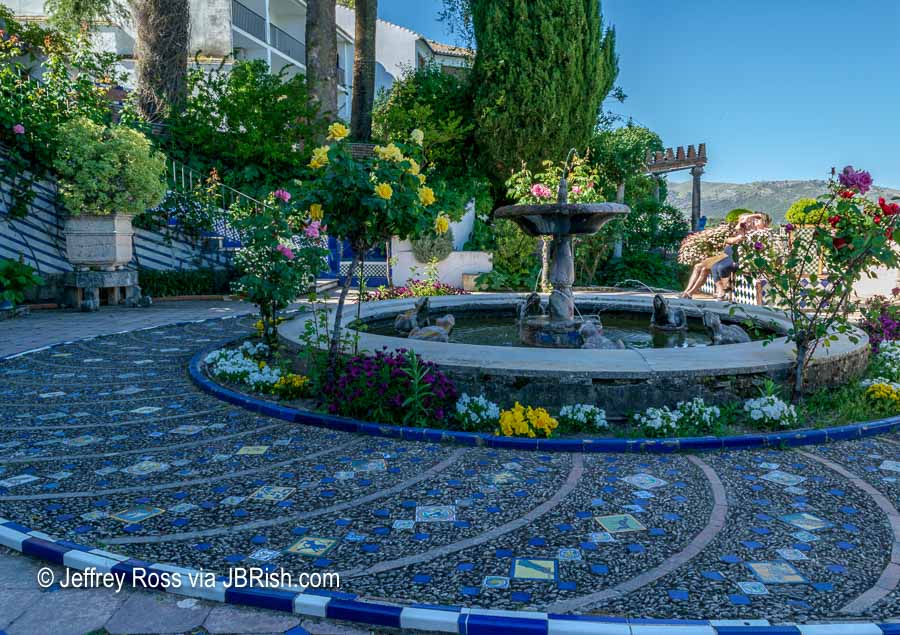
and vantage points of both east toward the mountains
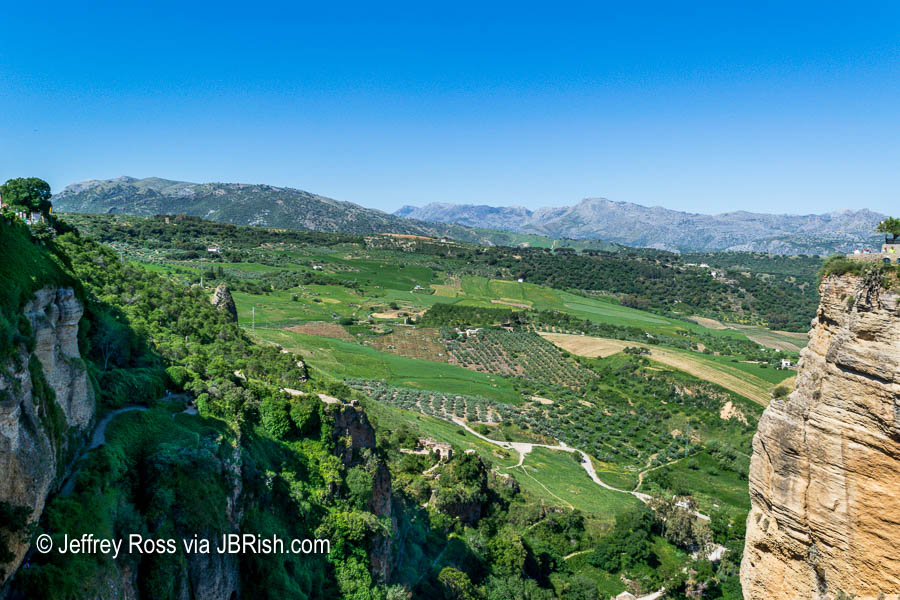
and west toward the New Bridge.
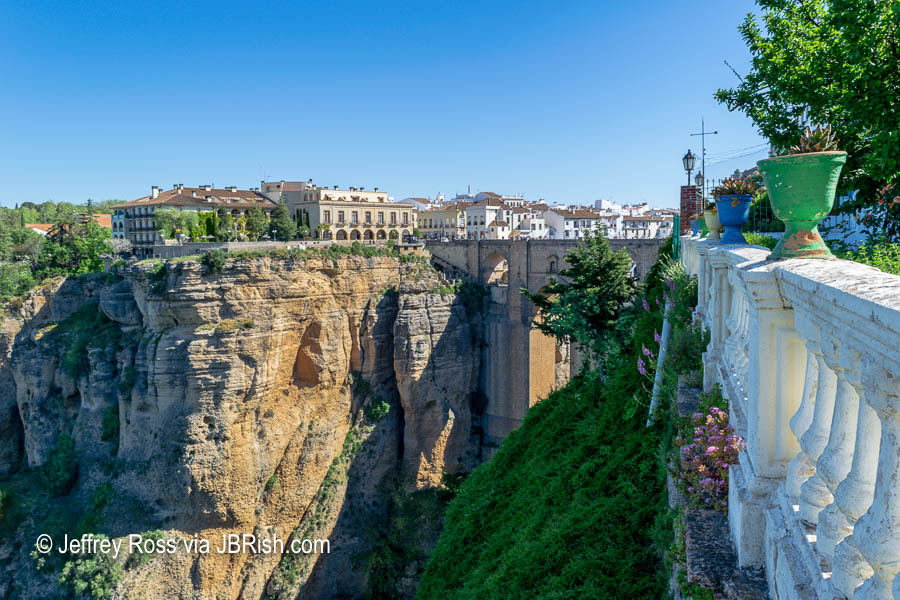
The house is built on the edge of the ravine and looking straight down also provides a wonderful view of the old retaining wall.

A short walk from the John Bosco house is a small park-like area with additional mountain views.
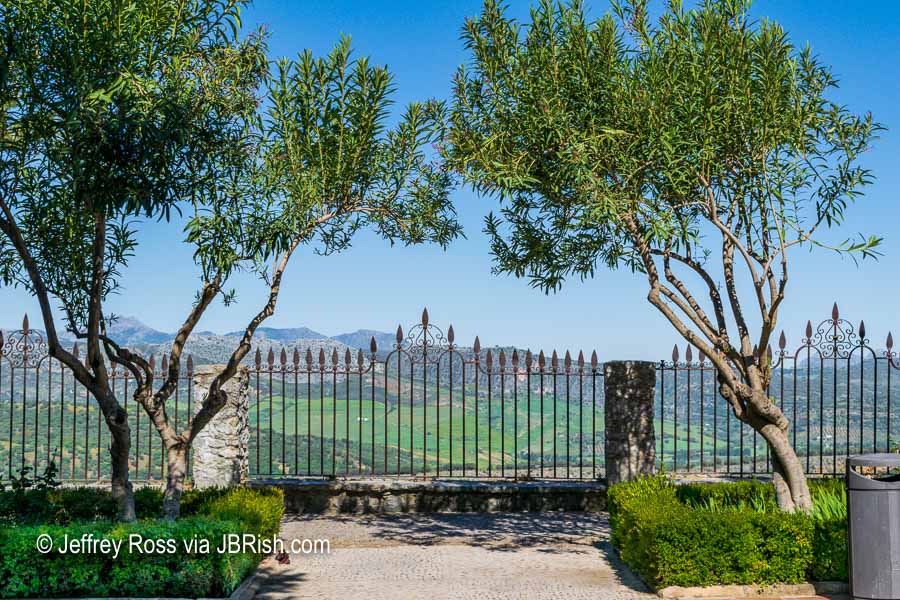
Like most other old cities and older sections of cities, Ronda had a number of interesting streets to wander and admire. The handles on this old wooden door and metal accents give testimony to the pride Spaniards take in maintaining their heritage. Notice how the right-hand handle is broken and not replaced.
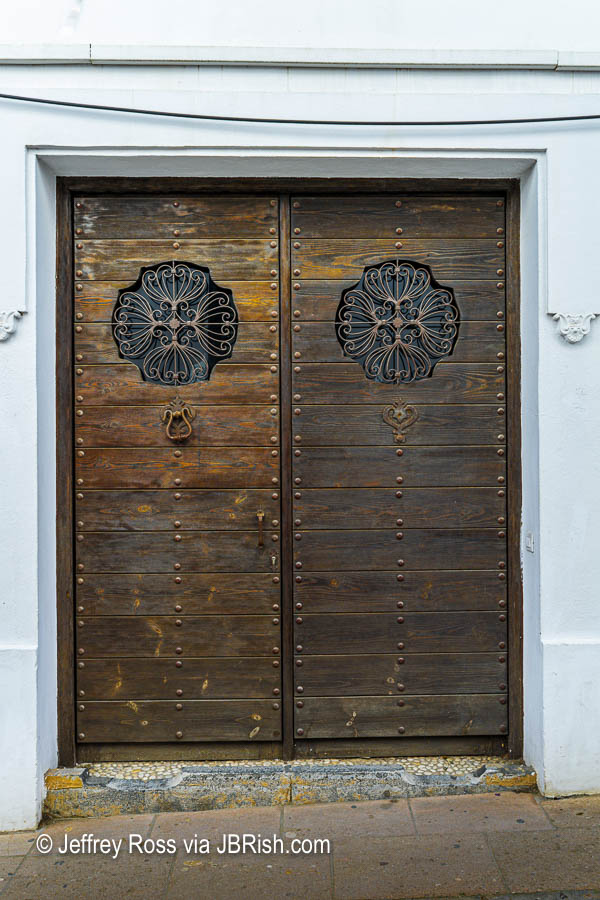
And one of our favorite features to explore are the side streets and small plazas of these wonderful old-world cities. This is picturesque Plaza Mondragon.
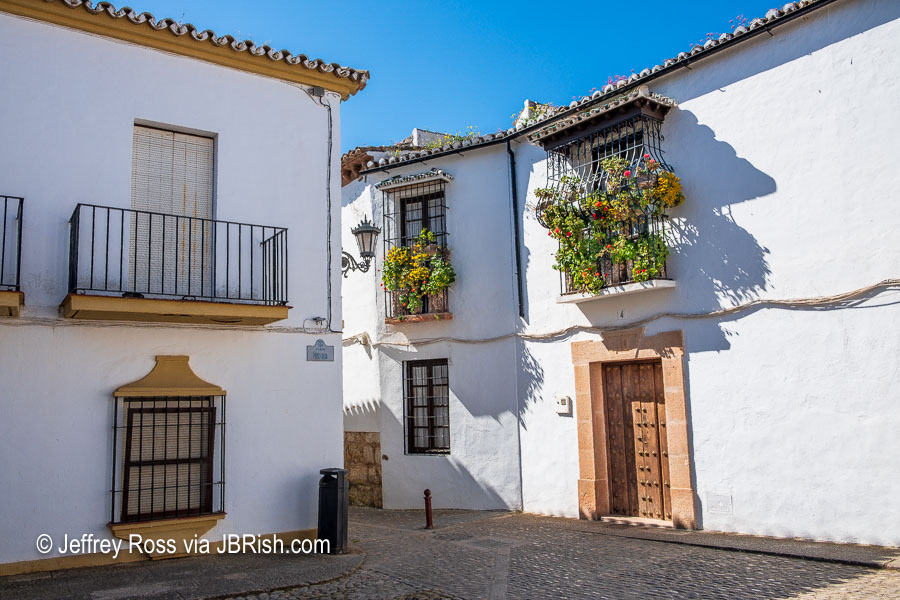
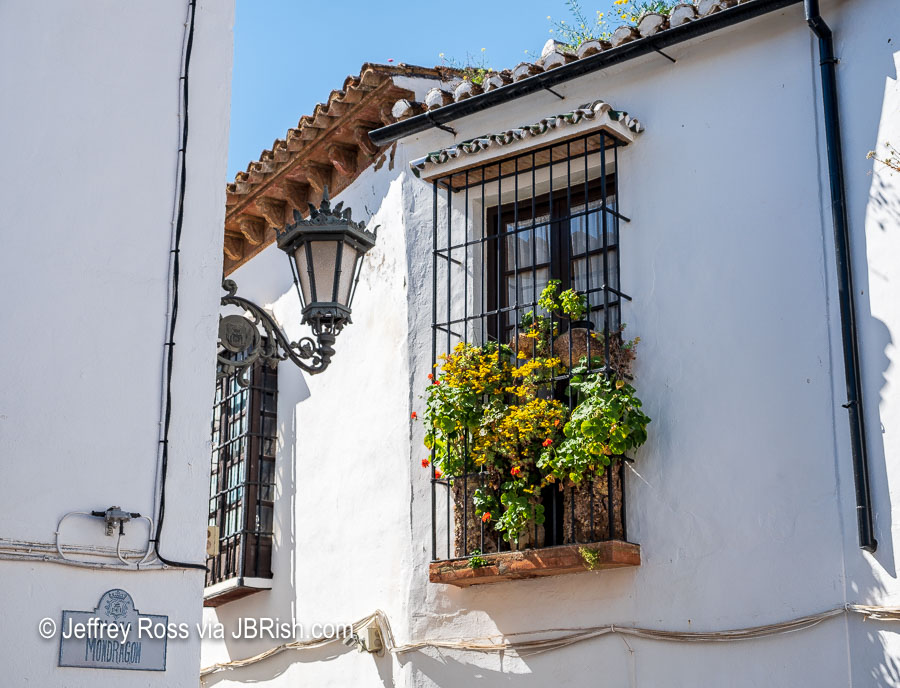
As we walked through Ronda, we visited one of the more unique churches, the Church of Our Lady of Peace.

The most important feature is the altar of the Virgen de la Paz, the patron Saint of Ronda.
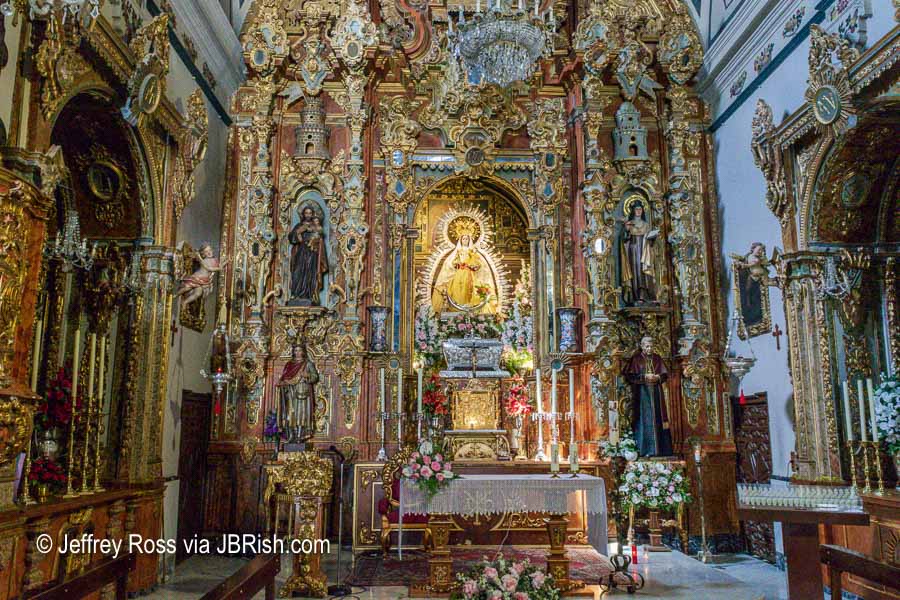
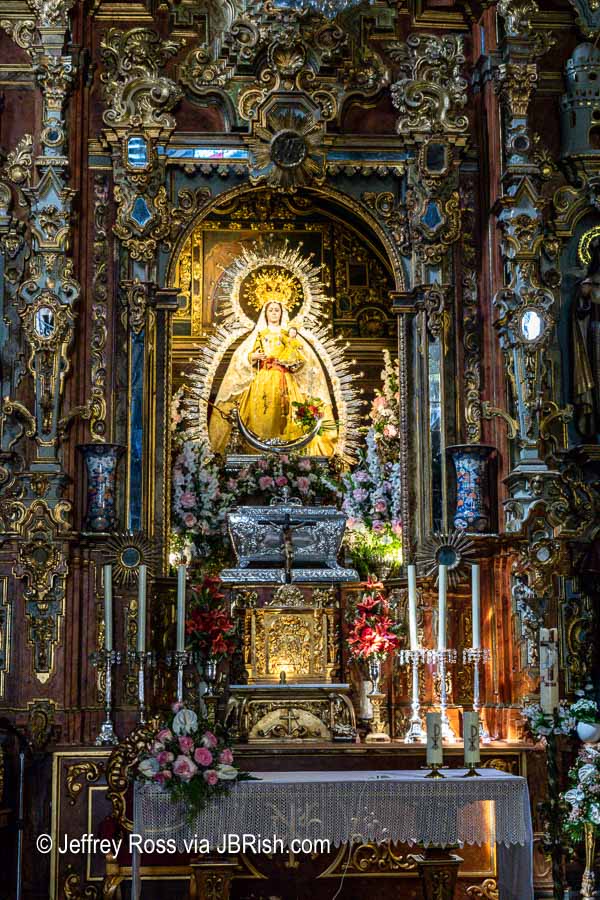
We admired other buildings and churches as part of our walking tour including the clock tower of the Church of Santa Maria la Mayor.

Wildflowers growing from the walls of another church added to the historic beauty of the building.

One of the most noteworthy historical assignations for Ronda is the birthplace of modern bullfighting sometimes referred to as the “Ronda school.” The historic context of bullfighting is lost to the ages, but it is suggested that perhaps it was a right of passage for adolescent boys before transitioning to manhood. The absolute derivation will never be known.
Pedro Romero, a Ronda native, hailed from a line of innovative bullfighters, but he was the one matador who raised the ritual to an artistic form and thus is given the distinction of the Father of Modern Bullfighting. Read more about it HERE
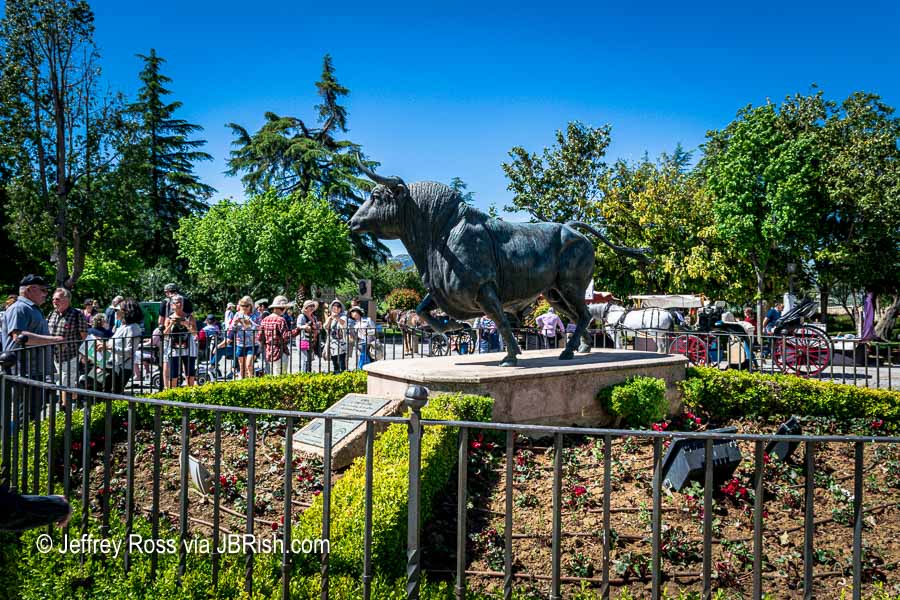
Plaza de Toros de Ronda is a world famous bullfighting ring which is not in regular use anymore. It is a beautiful structure to behold.
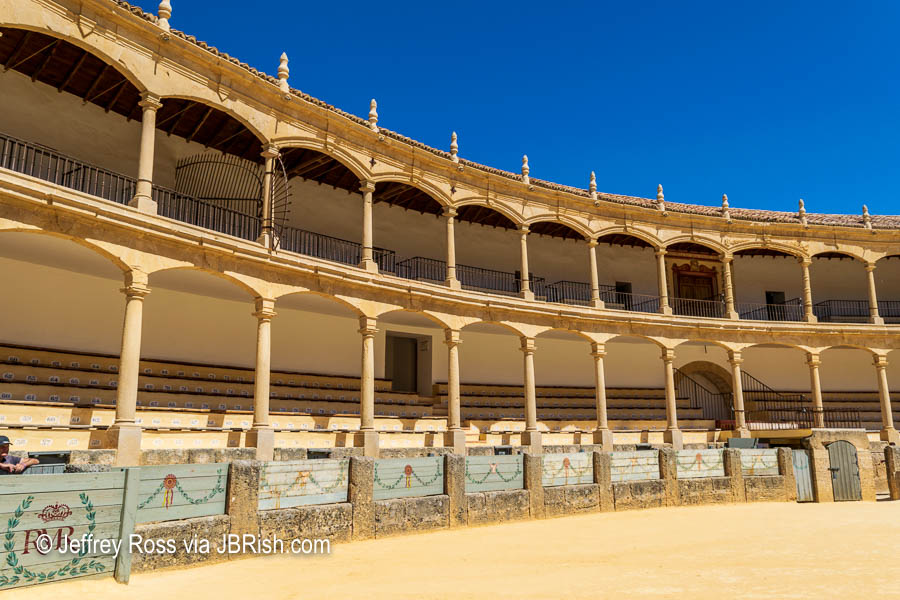
Standing in the middle of the arena, one gathers a sense of the scope and popularity of this Spanish tradition.
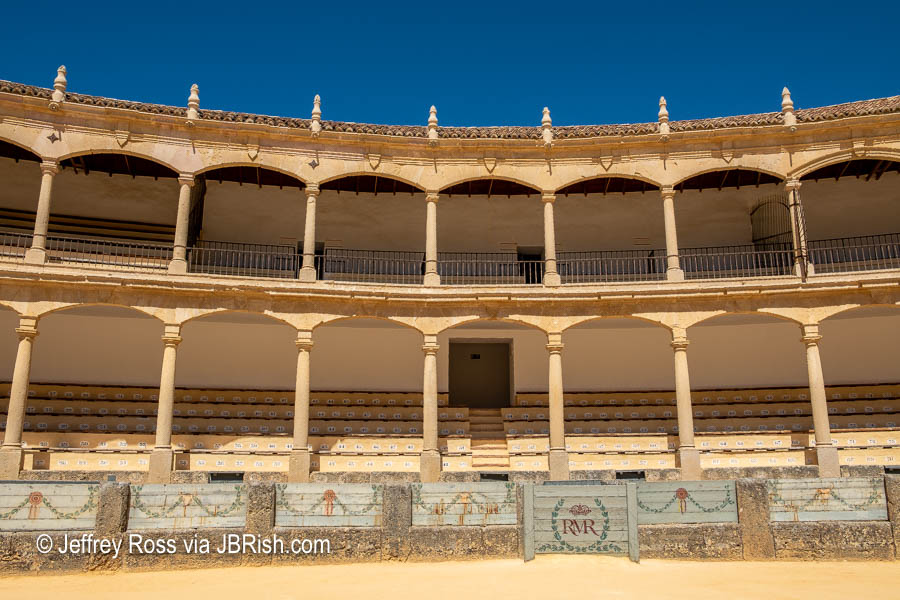
Some youngsters could not resist reenacting the contest between man and beast.
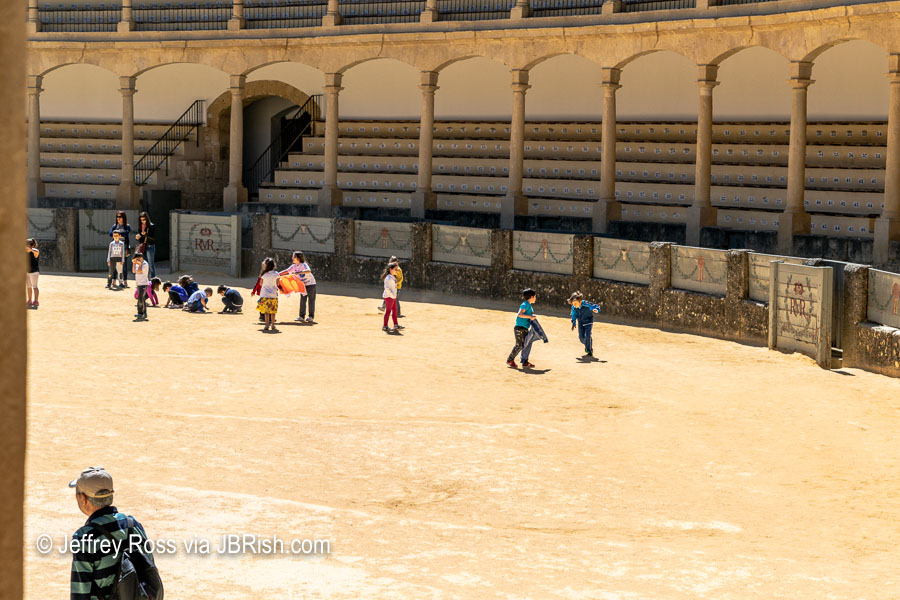
This was our last stop in Ronda this morning before having lunch and heading to our next destination. It surely is a town that deserves more time and perhaps one day we shall return to explore further.
One last look back at the El Tajo gorge of Ronda!
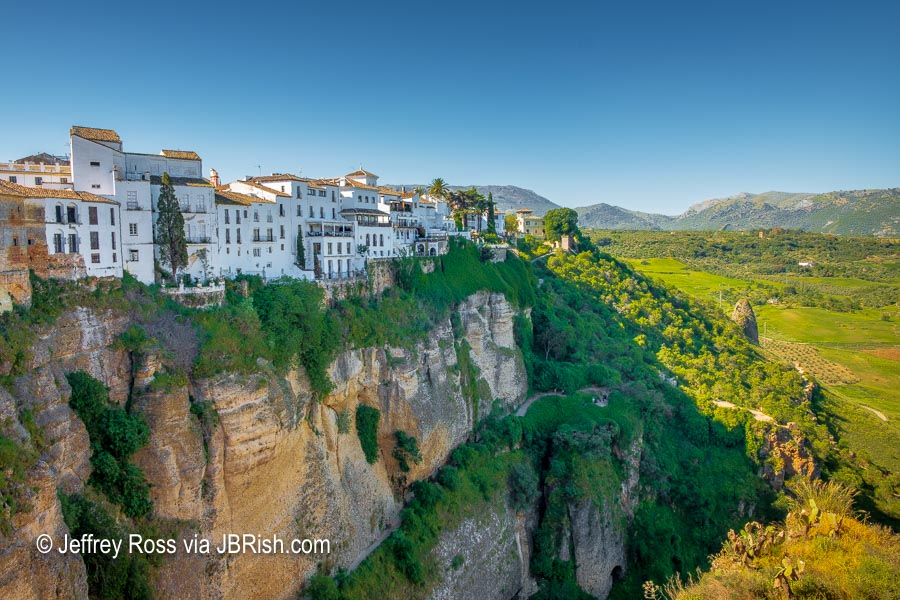
**********
***************
Continue reading about our trip to Portugal and Spain.
Read more Hiking and Exploration posts HERE
**********
All original content on this blog is copyrighted by Jeffrey B. Ross with ALL Rights Reserved. While reference links back to JBRish.com are appreciated and encouraged, please acquire approval for any reproduction of original content from this website.
©Jeffrey B. Ross 2014 – 2019 – JBRish.com